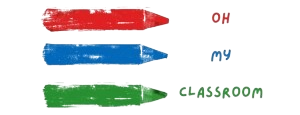Learning to read and write is a fundamental skill that children develop during their early years.
One of the first steps in this process is learning the letters of the alphabet.
But what order to teach letters to preschoolers?
The path to alphabet mastery involves a thoughtful sequence, incorporating developmental considerations, cognitive strategies, and engaging activities.
We’ll explore some of the most effective methods for teaching letters and suggest an order that may work well for preschoolers.

Start with Uppercase Letters:
Uppercase letters are often introduced first because they are visually distinct and frequently encountered in print. This familiarity sets the foundation for early letter recognition.
Begin by presenting uppercase letters individually, associating each with its name. Use visual aids, such as alphabet charts or flashcards, to reinforce recognition.
Teach Letters in Groups:
Grouping letters with similar shapes or sounds aids in cognitive organization and makes learning more manageable for preschoolers.
Organize letters into groups based on visual or auditory similarities. For example, Group 1 (C, O, G, Q, A, D) shares rounded shapes, while Group 4 (I, U, V, W, X, Y, Z) may have similar sounds.
Source : https://www.howweelearn.com/teaching-letter-recognition-what-order-to-introduce-letters/
Introduce Lowercase Letters:
Once familiarity with uppercase letters is established, introducing lowercase letters helps children understand the relationship between the two forms of the same letter.
Present lowercase letters alongside their uppercase counterparts. Highlight the similarities and differences in their shapes, emphasizing that they represent the same letter.
Teach High-Frequency Letters:

Starting with letters that appear frequently in simple, common words accelerates early reading and spelling skills.
Focus on high-frequency letters like S, A, T, P, I, and N. Introduce these letters in engaging activities to enhance retention.
Consider Letter Sounds:
Integrating letter sounds early builds the foundation for phonemic awareness, an essential skill for reading.
Associate each letter with its corresponding sound. Engage in activities like letter-sound games, rhyming exercises, and listening to initial sounds in words.
Use Multi-Sensory Approaches:
Engaging multiple senses enhances learning retention and makes the process enjoyable for preschoolers.
Incorporate hands-on activities like tracing letters in sand, forming letters with playdough, or using letter magnets. These activities provide a tactile and visual reinforcement of letter shapes.
Include Letter-Word Associations:
Associating letters with familiar words connects abstract symbols to real-world objects and experiences.
Introduce words that start with specific letters (e.g., ‘A’ for ‘apple’ or ‘B’ for ‘ball’). This contextualizes letter learning and facilitates vocabulary development.
Source: Artsphere
Practice in Context:
Moving beyond isolated letter recognition to practicing letters in context helps children understand the functional aspect of letters in reading.
Encourage reading simple words and sentences. Provide opportunities for children to identify and trace letters within meaningful contexts, fostering a connection between letters and their use.
Reinforce Through Reading and Writing:
Connecting letter learning to reading and writing activities helps reinforce skills in practical settings.
Read books together, pointing out letters in the child’s name or other words. Encourage writing through drawing, tracing, or using writing tools to solidify letter recognition and formation.
Letter Art and Crafts:

Combine creativity with letter learning through arts and crafts. Each week, focus on a specific letter and have children create art projects related to that letter.
For example, ‘B’ could be for butterfly crafts, while ‘S’ inspires a snake-shaped masterpiece. This hands-on approach not only reinforces letter recognition but also encourages fine motor skills.
Source: KindergartenConnection
Alphabet Scavenger Hunts:

Transform the learning environment into a treasure hunt for letters. Create engaging scavenger hunts where children search for specific letters hidden around the room or outdoor spaces.
This not only enhances letter recognition but also adds an element of adventure to the learning experience.
Source: PlayPartyPlan.com
Conclusion
By incorporating these detailed approaches, educators and parents can create a comprehensive and engaging learning environment for preschoolers as they embark on their journey to letter mastery.

